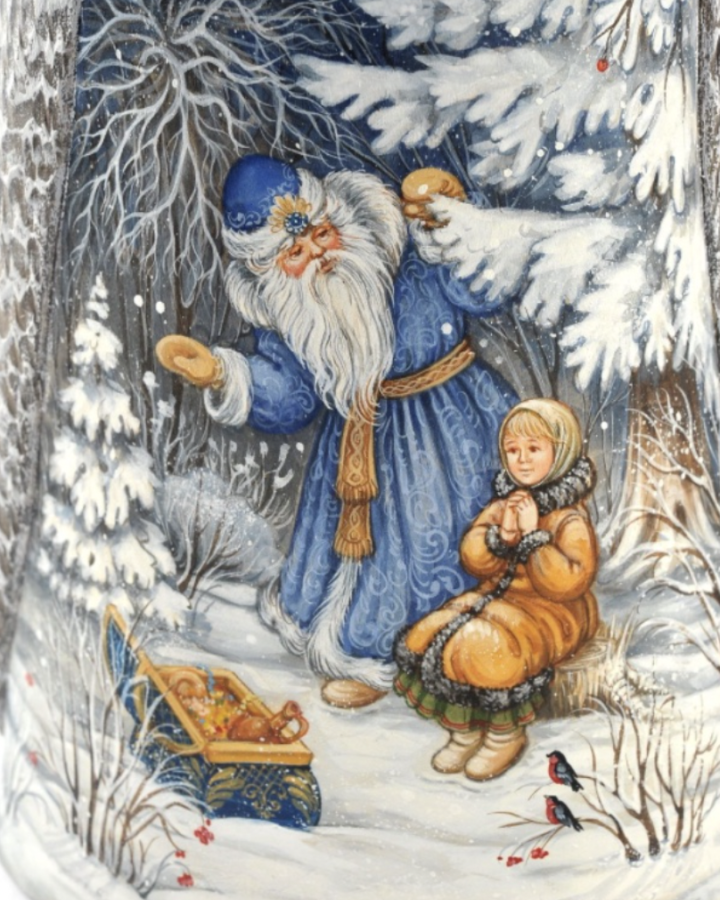Holiday traditions around the world: What people far and wide do to celebrate holiday festivities
For some it’s stockings hung by the fire, for others it’s chestnuts roasting on an open fire or, in the case of Poland, a celebratory spiderweb on the Christmas tree but no matter the custom it usually represents a family’s history and beliefs. Many don’t realize the inspiring family traditions that others have, people fall under the misconception that the traditions and activities most well-known are shared by everyone else, however, that is not the case.
From Europe to Asia and further to Russia, depending on religion and beliefs these vastly different places around the world share in common charming, flamboyant, and sometimes rather curious, merriment.
Starting early in the month on December 13th with a famous Swedish and Norwegian holiday tradition called “St. Lucia”. Each town picks a young local girl to lead a day full of walking the streets, wearing on her head a wreath made of pine branches, foliage, and holly, with bright candles to light the way through the cold dark winter night that is this special day. Legend has it that long ago a young girl named Lucia traveled around Sweden handing out goods, most commonly including some sort of holiday cookie, wearing candles atop her head, to not only see but show a welcoming glow and warmth to the poor, freezing people in need she is intending to help.
Following this theme of helping others, there is another saint full of this display of kindness and the giving spirit.
St. Martin is celebrated by many in Europe, especially by those with more of a German influence. There is a story with a nobleman, dressed in a warm red cloak riding upon his horse in the dead of night. When he, however, stumbles across a beggar man, shivering from the snow and cold. With sword in hand, he swiftly cuts his cloak in two and gives the poor man the other half. This tale of kindness and generosity is celebrated by a feast and much joyous laughter.
Moving more across the globe, Asia has many wonderful traditions, many unique when compared to others.
In Syria, it is not often remembered that a number of the population is Christian but also celebrates their version of “Santa”, except with a twist. It is customary for a camel to play the gift-bearing role at Christmas time. Dressed in silks of green, red, and gold, with baskets of goodies atop their backs, they travel from place to place surprising children around town. Presents usually include candies, cookies, or other little handmade toys. This presence of the camel is associated with the bible, it’s thought to help tie together both the biblical Christmas story with the children’s fun, as a way to make the Bible more interesting for young kids.
In Kazakhstan, 70% of the population is Muslim and doesn’t celebrate Christmas. However, there are winter festivities and two well-known figures who give out gifts and treats to the younger citizens of the town. Father Frost and the Snow maiden, two individuals dressed in light blues, whites, grays, and gold bring gifts in the new year for Kazakhstan children, with the paralleling theme to Saint Nick, if you are kind to others you will receive something in return. Father Frost and the Snow maiden are usually statues carved out of wood and delicately painted, they are both displayed in the town square like royalty.
Christmas time is a celebrated time in Russia, it follows Christmas and is two weeks associated with the pagan traditions of fortune telling and caroling. On January 19th, Epiphany is celebrated, which honors Jesus’s baptism many people celebrate by diving into icy rivers and lakes.
In Russia, the New Year is an extremely lively time. A full 7 days of celebratory fun which includes colorful outfits, feasts, dancing, and of course much laughter.
With such deep, immense joy and good times, these long-established traditions are usually signifying a greater purpose, whether that be giving back or teaching that if you do good you will receive good while at the same time also having much well-deserved enjoyment in the process.
Your donation will support the student journalists of Highlands High School. Your contribution will allow us to cover our annual website hosting costs.




Patty Burfoot • Dec 13, 2022 at 5:04 pm
I now understand how so many Christmas traditions have come about. Celebrations of goodness, kindness and giving are at the center of each tradition.
This is a wonderful, eye-opening article;
nicely done.
Thank you.